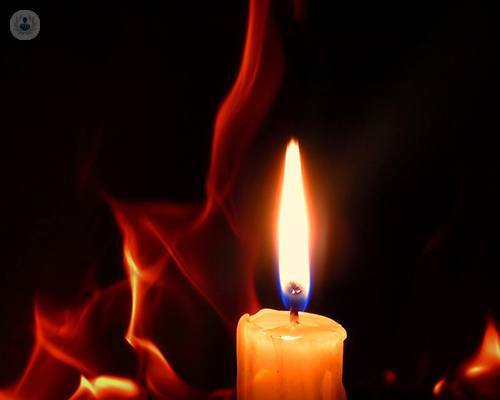
Reconstructive surgery as a treatment for burns
There are several techniques for reconstructing the skin after a burn. The most commonly used is the partial skin graft.

When is plastic surgery necessary as a burn treatment?
Depending on the depth of the burn, the skin may regenerate itself. If, however, the cells of the lower layers of skin have been damaged, reconstructive surgery may be necessary to cover the burn. There are several different options, the most common being the skin graft. Split-thickness skin grafts only transplant the outer layers of skin, while full-thickness skin grafts transplant all the dermis. Other options include microsurgery and tissue expansion (see below).
Covering a burn
When someone suffers a burn, the normal properties of the skin are affected. Therefore, what the surgeon intends is to recover those properties by means of a new cover to replace the injured skin. This cover may be temporary or permanent. Temporary coverage consists of temporary skin dressings or replacements, until the burned area heals on its own, but when the burn is more severe and cannot heal itself, surgeons use techniques such as autografts and skin cultures.
Burn reconstructive surgery techniques
There are various reconstructive surgery techniques for the treatment of a burn.
- Autograft of skin: This skin graft is the most commonly-used technique. It consists of obtaining grafts from the patient's own skin. The drawback is that these grafts leave a small scar in the area from where they are obtained. Once removed, the skin graft is fixed to the burnt area with stitches and a dressing.
If the burn is so deep that there are no remains of dermis or fat and areas of tendon or bone are exposed, other types of burn reconstruction techniques should be used.
- Tissue expansion: This technique involves growing new skin for reconstruction. A silicone “balloon expander” is implanted under the skin near the burn and is gradually filled with salt water (saline) to stretch the skin and force it to grow. The extra skin can then be used to cover the burn. However, this procedure can last for months, and if the burn is in a visible place, the bulge caused by the balloon expander may be undesirable.
- Classic reconstructive surgery: A microsurgical procedure based on the use of tissue flaps.
The duration of the reconstruction process depends on the initial complexity.
Care after a burn reconstruction
After the operation, the scars should be treated with hydration, including creams that promote healing. Pressure therapy should also be performed. In many cases, it is essential to follow up with rehabilitation therapy and physiotherapy for the physical and functional recovery of the patients.

